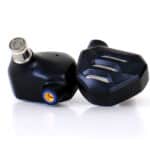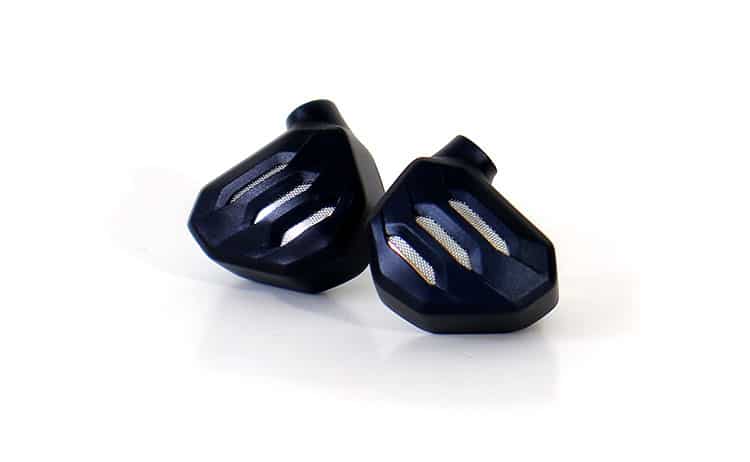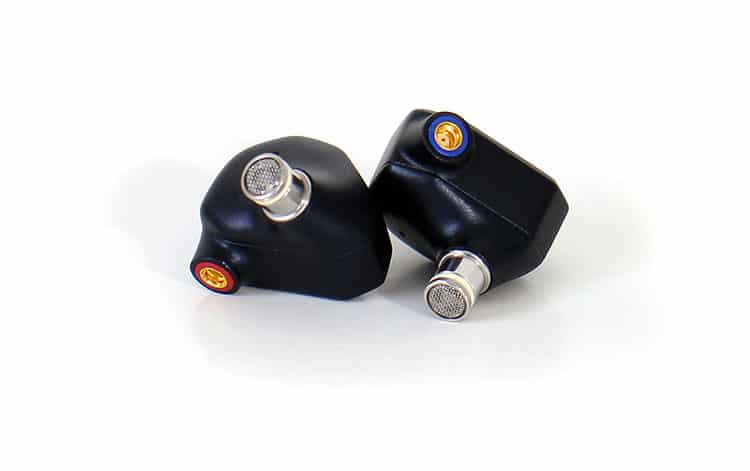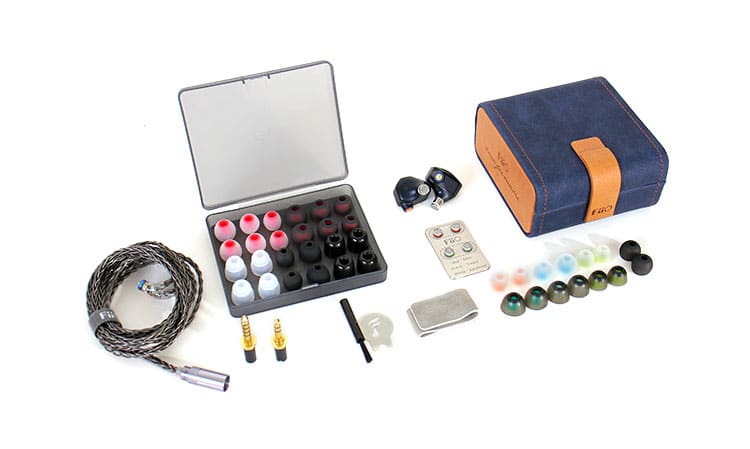In today’s post, we review the FiiO FH7s which is a hybrid single dynamic and quad-balanced armature driver semi-open in-ear monitor. It is priced at $399.99
Disclaimer: This was sent to us as a sample for our honest opinion. Headfonics is an independent website with no affiliate links or services. We thank FiiO for its support.
You can click here to learn more about the FiiO gear we have previously highlighted on Headfonics.
Note, that this post follows our latest scoring guidelines which you can read up on here.
The IEM in for review today belongs to the FH line and is a recently released model. The new FH7s IEM sits somewhere between their FH9 and their FH5s but seems to be a sidestep to the FH7. Or is it? It seems more in line with the FH9.
If you take a closer look at all the above-mentioned FiiO IEMs they all have similar characteristics internally and externally to the FH7s.
The differences lie mainly in the tuning aspect, with the inclusion of the FH9 second-generation bass driver plus the open-back shell design all in one package.
Tech Highlights
The FiiO FH7s have many of the developmental tweaks that FiiO’s previous IEMs used and for starters, it uses a 5-driver hybrid array.
The most noted driver within this array is the second generation FiiO developed 13.6mm Diamond Like Carbon or DLC dynamic driver which is exclusively on low-frequency duty. The first-generation driver used on the FH7 was a similar sized Beryllium coated driver and is mentioned here for comparison’s sake.
There are also 4 custom Knowles balanced armature drivers which vent out and in front of the removable tuning filters at the output nozzle tip.
The midrange portion to be more specific is reproduced by a DFK series Knowles dual composite BA driver customized by Knowles and FiiO in conjunction with this production. This driver combo is combined with FiiO’s notch filter implementation.
The treble response is handled by an SWFK-31736 dual BA driver array. The complete driver array is tuned for a natural tone. So the driver configuration here seems very similar to the FH7 except for the second-generation bass driver and a few other tweaks here and there.
The rest of the tech involved within the shell might sound familiar to you including the S Turbo implementation for the bass driver. Another familiar implementation is the semi-open back design which combined seems to let that DLC driver breathe easily which in theory would help improve the responsiveness of the driver.
Design
FiiO ditched the copper centerpiece and the 3-piece design of the FH7 and the FH5s and opted for a 2-piece shell similar to the FH9. The shells are CNC formed from a solid piece of aluminum the same and topped off with a vented backplate.
The FiiO FH7s uses a timeless black with silver trimmings color scheme. The sliver is seen on the three vents of the backplate and the output nozzles while a black anodized finish dominates the shell surface in general.
Connectivity is enabled by some MMCX connectors which are color-coded. The overall design seems similar to the FH9 but with a splash of FH5s. The design however seems to have taken a more asymmetrical aspect this time, particularly with the backplate design.
Comfort
Although the FiiO FH7s shells are completely made of metal they do feel rather light but robust at the same time. They are comfortable to wear or at least in my case. They do seem to be designed with a general fit ideology In mind.
The output nozzles seem to have the right amount of depth and hold on well to the selected tips you install plus they also anchor inside the ear well.
The output nozzle ends have knurling which not only helps to hold on to the tips but also aids in their removal since FiiO includes three swappable sets that give the FH7s three different general sonic characteristics.
Tips
The FiiO FH7s comes with 19 pairs of tips, 18 sets, and one preinstalled. Two of the sets are double flanged, two sets of foam tips, three spinner-type tips, a few silicone tips, and some rubber tips are also included. I bet I missed one or two.
But the one particular tip set FiiO considers the highlight here within that collection of tips is the three included sets of the FiiO brand HS18 silicone tips. These boast a surface thickness of .4mm and are extremely soft which in theory boosts comfort levels.
One of the unique design aspects of these tips is the rounded edge design at the output end of the tips. It seems rounded edges are easier going on sound refractions and it sort of reminds me of stealth magnet tech in which refractions were minimized by rounding off the magnet edges. Interesting indeed.
These tips have got to be some of the most comfortable tips I’ve ever worn for the simple fact that the silicone is very thin and it does not expand much within the ear. That can become a source of irritation but here it just slightly molds itself inside the ear.
The sound signature they permeated was similar to the balanced tips but not as forward-sounding. It made the FH7s sound rather smooth with a slight reduction in impactfulness as a tradeoff.
Stock Cable
Of lately I’ve had no issues or complaints about any of the stock cable assemblies FiiO includes with their IEMs and the one inside the FH7s box is one of the nicest yet except for one small detail discussed later.
A 4-pin mini connector is placed at the end of the cable assembly. The assembly is made with silver-plated monocrystalline copper wire in an eight-wire braid with a total of 152 strands of wire.
Then the assembly branches out into a pair of 4-wire braided cable assemblies which are then terminated with MMCX connectors.
That 4-pin connector comes ready to accommodate any of the two plugs that come in the box. FiiO includes a 3.5mm SE and a 4.4mm Pentaconn connector.
Here is where that exception lies since there’s no 2.5mm connectivity included as with past iterations. Not that a balanced connection is necessary since the FH7s tend to be super-efficient but it would have been nice to have.
The cable assembly hardware is all metal, silver in tone, and polished to a mirror finish. The wire itself emits a copper tone but it’s not a reflection of the internal wire. The MMCX connectors are color-coded blue and red for easy identification. The ear loops seem to be soft and comfortable but fixed and not very moldable.
Packaging & Accessories
There’s a lot inside the FH7s box besides the 19 sets of tips. There are two additional sets of nozzle tip filters mounted on a rather heavy brushed stainless steel plate and a total of three. You get a magnetic wire clip, an MMCX quick assist tool plus a cleaning brush.
An instruction manual greets you as soon as you open the magnetic flap of the main box. Once you open that flap and remove the manual you are greeted with the facia of the IEMs and a rather nice storage case. Below that sits a couple of other smaller boxes that contain some of the included goodies.
The packaging seems more efficient but equally pleasant in lamination and presentation. The amount of accessories remains high but FiiO managed to reduce the size of the box and overall package compared to their previous model boxes.
Sound Impressions
Summary
I gave exclusivity to the FH7s balanced sound tuning filter which was already installed and the HS18 silicone tips from FiiO to go brand exclusive and to remain critical of both end product and their synergy with included accessories that were also made by FiiO. I felt that was the best way to evaluate the FH7s.
The general feeling you get is close to neutral, impactful, and a dynamic response that is fun to listen to. There is also a small hump around 80 Hz. The bass starts to dip way below 20Hz which denotes full bass representation that can be heard way below the mentioned 20Hz mark. So it’s very safe to say that the FH7s have a very good bass extension capability.
I did hear 3 peaks up in the upper midrange frequencies as well, one at around 2.5kHz, and one at 5kHz, but the most prominent one was at 7kHz.
None of the peaks were too unbearable. They just added a splash of presence and flavor into those frequency areas. They each seemed to be of just a few decibels max.
The top end is forward, the midrange is soft-mannered and the bass is punchy with a medium amount of slam and impact attributed to most of the energy being around that 80Hz region, but clean and well-defined nonetheless. That would be a good general description.
Timbre
The most notable aspect of the FiiO FH7s was the high-frequency response that although brought forth with a high level of presence also remained controlled and sharply defined. Only on rare occasions did they come through metallic sounding but overall they sounded quite illustrious and dignified.
It’s actually to my surprise because if you look at the exploded view, the BA tweeters are right at the end and tip of the output ports and that usually translates into excessive intensity if not quelled correctly. FiiO still managed to bring forth those tweeters and still keep them under the vexing threshold.
The midrange is butter. It never offends or screams at you. It remains polite all the time. It does seem reared a bit at times but most times is presented with just the right amount of presence.
It never does float too far out or too forward into the stage. The midrange area has a good level of transparency and technical ability with very little perceived congealment.
The bass response is rather strong, especially around the midbass region where it has most of the color and elevation. The slight 80Hz elevation gives the bass area a punchy aspect that can get overwhelmed at high volume levels.
The speed levels, transients, attack, and decay all seem quickly produced along with very good note distinction.
One other area that the FH7 does well in is detail retrieval. They seem to have a very good technical ability in that aspect and a good ability to bring forth background nuances and micro details, breath, string vibrations, and the occasional drumstick drop.
Staging & Dynamics
The one particular aspect that the FiiO FH7s lack is height within their wide soundstage. There’s plenty of depth and there’s also precise placement for sure. If you hear a track with vocals and instruments, the instruments usually occupy a space on the sideline while vocals remain center and widely produced, almost speaker-like.
The overall sound signature far as staging seems to have a spread that tries to assimilate the sense you get when at a concert where all the sound is upfront and center but with an ability to fill in a wide aspect of the horizontal plane but with a somewhat reduced vertical perception.
The FiiO FH7s imaging capabilities are rather stellar. If the recording engineer pans a sound from side to side, their accuracy leaves no underfill and the right recording can leave a “run in circles” impression.
I heard some recordings that gave off a distinct circular motion which was reproduced very well and gave off an almost euphoric sense.
One would assume that the 13.6mm drivers would be mini hammers but they’re closer to neutral not only in tonality but in slam and impact.
I was expecting bass machines but those dynamic woofers seem well-balanced and in equilibrium with the rest of the driver array. They seem a more delicate listener experience than one would expect.
Click on page 2 below for pairings and our select comparisons.











